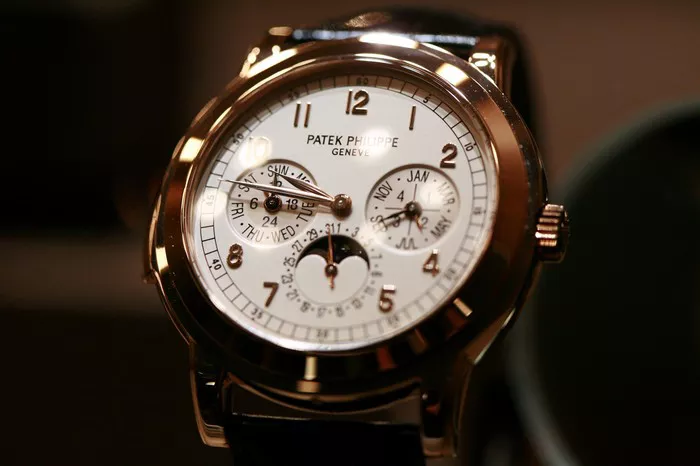In the illustrious world of haute horlogerie, Patek Philippe and Rolex stand as titans, revered for their precision, craftsmanship, and legacy. As watch enthusiasts delve into the rich history of these iconic brands, a question often arises: Is Patek Philippe older than Rolex? In this comprehensive exploration, we unravel the chronicles of the time, tracing the origins, milestones, and enduring legacies of Patek Philippe and Rolex to determine the answer to this captivating horological query.
1. Patek Philippe: A Legacy Forged in 1839
The Genesis of Excellence
Patek Philippe, founded in 1839 by Antoine Norbert de Patek and François Czapek, traces its roots to Geneva, Switzerland. The company’s early years saw collaborations with French watchmaker Adrien Philippe, resulting in innovations like the keyless winding mechanism. In 1851, the partnership was formalized as Patek, Philippe & Cie, marking the inception of a legacy that would endure for generations.
2. Rolex: Birth Amid British Horology in 1905
The Visionary Journey Begins
Rolex, on the other hand, had a more recent initiation into the horological scene. Established by Hans Wilsdorf and Alfred Davis in London in 1905, Rolex initially focused on the precision of wristwatches, an emerging trend at the time. In 1919, Rolex relocated its headquarters to Geneva, solidifying its connection with the heart of Swiss watchmaking.
3. Patek Philippe’s Horological Milestones
A Tapestry Woven with Precision
Throughout the 19th and 20th centuries, Patek Philippe established itself as a pioneer in horological innovation. From creating the first Swiss wristwatch in 1868 for Countess Koscowicz of Hungary to introducing the perpetual calendar in 1925 and the iconic Calatrava collection in 1932, Patek Philippe consistently pushed the boundaries of watchmaking excellence.
4. Rolex’s Trailblazing Achievements
Wristwatches Redefined
Rolex, too, embarked on a journey of groundbreaking achievements. In 1926, the brand introduced the Oyster case, the world’s first waterproof and dustproof watch case. The Oyster Perpetual, launched in 1931, featured the groundbreaking self-winding mechanism, forever changing the landscape of watchmaking. Rolex’s commitment to precision earned it the status of the first wristwatch to receive the Swiss Certificate of Chronometric Precision in 1910.
5. The Great Depression: A Test of Resilience
Navigating Turbulent Waters
Both Patek Philippe and Rolex faced the challenges of the Great Depression in the 1930s. While economic hardships tested the resilience of the luxury watch industry, both brands weathered the storm with innovation and adaptability. Patek Philippe continued to produce masterpieces like the Calatrava, and Rolex strengthened its position with enduring classics like the Bubbleback.
6. Ownership Transitions: Shaping Identity
Guardians of Tradition
In the mid-20th century, both Patek Philippe and Rolex experienced transitions in ownership. Patek Philippe was acquired by the Stern family in 1932, a pivotal moment that solidified the brand’s commitment to family values and independence. Rolex, under the leadership of Hans Wilsdorf and subsequent generations of the Wilsdorf family, maintained its dedication to precision and innovation.
7. Iconic Collections: Defining Eras
Calatrava, Submariner, and Beyond
Patek Philippe’s Calatrava, launched during the Great Depression, became an enduring symbol of timeless elegance. Meanwhile, Rolex’s Submariner, introduced in 1953, revolutionized dive watches. Both collections became cornerstones of each brand’s identity, reflecting their commitment to craftsmanship, precision, and design.
8. Enduring Alliances: A Testament to Quality
The Pursuit of Excellence
Over the decades, Patek Philippe and Rolex cultivated enduring relationships with influential figures and institutions. Patek Philippe’s collaboration with Tiffany & Co. in the early 20th century solidified its reputation for luxury and exclusivity. Similarly, Rolex’s partnerships with explorers and adventurers, including Sir Edmund Hillary and Tenzing Norgay, reinforced its commitment to durability and precision.
9. The Quartz Crisis: Navigating a Transformative Era
Adapting to Technological Shifts
The advent of quartz technology in the 1970s posed challenges to traditional mechanical watchmakers during the Quartz Crisis. Both Patek Philippe and Rolex navigated this transformative era by maintaining a steadfast commitment to mechanical excellence. Patek Philippe introduced iconic models like the Nautilus, while Rolex continued to evolve its iconic Oyster Perpetual line.
Conclusion: Guardians of Time, Each with a Unique Legacy
In determining whether Patek Philippe is older than Rolex, we uncover not just a chronology of years but a tale of two brands that have shaped the very essence of haute horlogerie. Patek Philippe’s journey began in the 19th century, weaving a tapestry of precision and elegance. Rolex, emerging in the early 20th century, embarked on a visionary quest for innovation and durability.
As guardians of time, Patek Philippe and Rolex stand as paragons of craftsmanship, each with a unique legacy that has left an indelible mark on the world of watches. Patek Philippe, with its early 19th-century origins, carries the weight of centuries in its legacy. Rolex, born in the dawn of the 20th century, represents a more recent but equally impactful chapter in horological history.
In the end, the question of which is older is not just a matter of years but a celebration of the enduring spirit of watchmaking. Patek Philippe and Rolex, each with its distinct identity, continue to shape the horological landscape, transcending time as we know it. Whether adorned with a Patek Philippe Calatrava or a Rolex Submariner, enthusiasts embrace not just a timepiece but a living testament to the relentless pursuit of excellence in the art of watchmaking.

